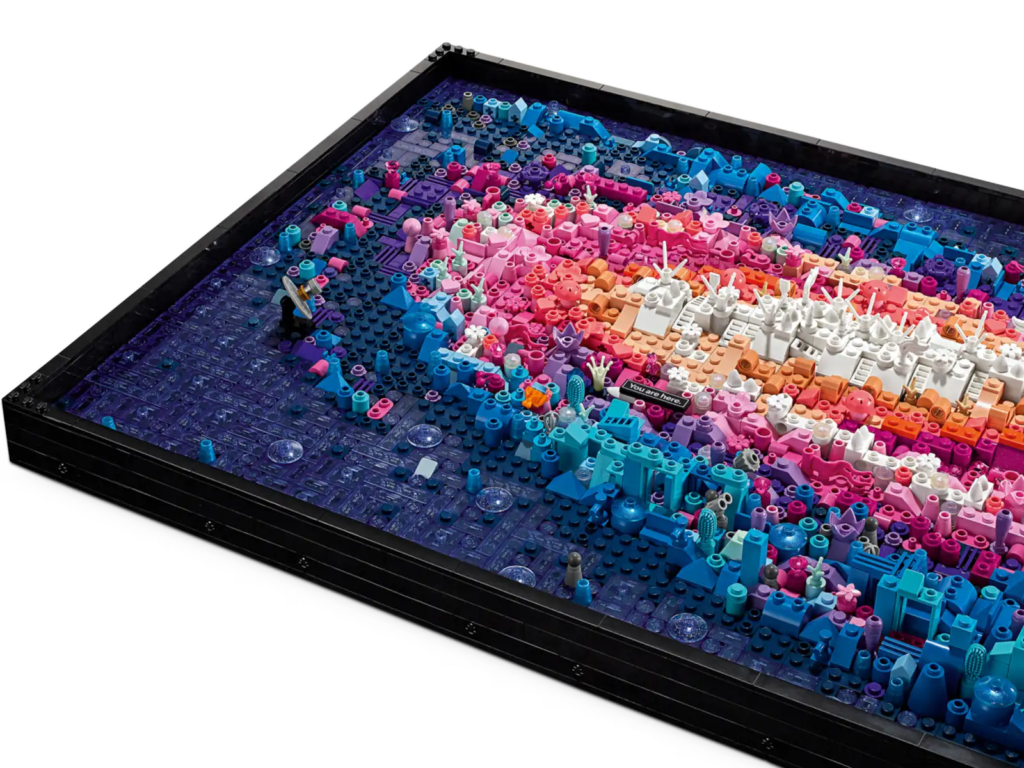In the vibrant world of LEGO, one technique stands out for its ability to transform simple bricks into intricate masterpieces: greebling. Greebling, for the uninitiated, involves the addition of small, often seemingly random, parts to a larger LEGO model to give it texture and depth. This technique can be seen in sets like the Milky Way Galaxy, where the surface of the spaceship is brought to life with tiny, detailed pieces.
What is Greebling?
Greebling is akin to the artistic techniques used by history’s greatest painters to add texture and realism to their works. For instance, Vincent van Gogh’s use of impasto—where paint is laid on thickly—creates a texture that makes his paintings almost tangible. Similarly, LEGO’s greebling adds a layer of complexity that draws viewers into the miniature world.
The History and Evolution of Greebling
The term “greebling” originated in the science fiction model-making community, where it described the intricate details added to spaceship models. LEGO enthusiasts adopted the term, and it quickly became a staple in the lexicon of brick-building. Greebling isn’t just about piling on pieces; it’s an art form that requires a keen eye for detail and an understanding of how small elements can enhance a larger structure.

Why Greebling Matters
Much like the techniques of past masters, greebling can elevate a LEGO set from simple to spectacular. Take the Milky Way Galaxy set, for example. Without greebling, it would just be a smooth, flat model. With greebling, it becomes a vibrant, dynamic piece that captures the essence of a bustling, mechanical spaceship.

Adding Depth and Realism
Greebling adds depth and realism in a way that smooth surfaces cannot. By incorporating a variety of small pieces—such as gears, tiles, and slopes—builders can mimic the complex surfaces of real-world objects. This technique is not just about aesthetics; it also provides a tactile experience that engages both the eyes and the hands.
Greebling in the Works of Great Artists
Just as greebling adds dimension to LEGO sets, the use of texture has been a critical component in the works of great artists throughout history. Here are three examples:
- Vincent van Gogh – “Starry Night”
- This painting is renowned for its swirling, textured brushstrokes that create a dynamic and vibrant sky.

- Claude Monet – “Water Lilies”
- Monet’s series of Water Lilies paintings use dabs and strokes of paint to create the shimmering effects of light on water.

- J.M.W. Turner – “The Fighting Temeraire”
- Turner’s masterful use of thick, swirling brushstrokes conveys the movement of the sea and the sky, adding a sense of depth and realism.

Tips for Mastering Greebling
Want to try your hand at greebling? Here are a few tips to get you started:
- Think Small: Use tiny pieces to add intricate details.
- Layer Up: Build in layers to create depth.
- Mix and Match: Combine different shapes and colours for a varied texture.
- Experiment: Don’t be afraid to try new combinations.
Conclusion
Greebling is a testament to the creativity and ingenuity of LEGO builders. It transforms ordinary sets into extraordinary works of art, much like the textured techniques of history’s greatest painters. Whether you’re a seasoned builder or a novice, experimenting with greebling can add a whole new dimension to your creations.



